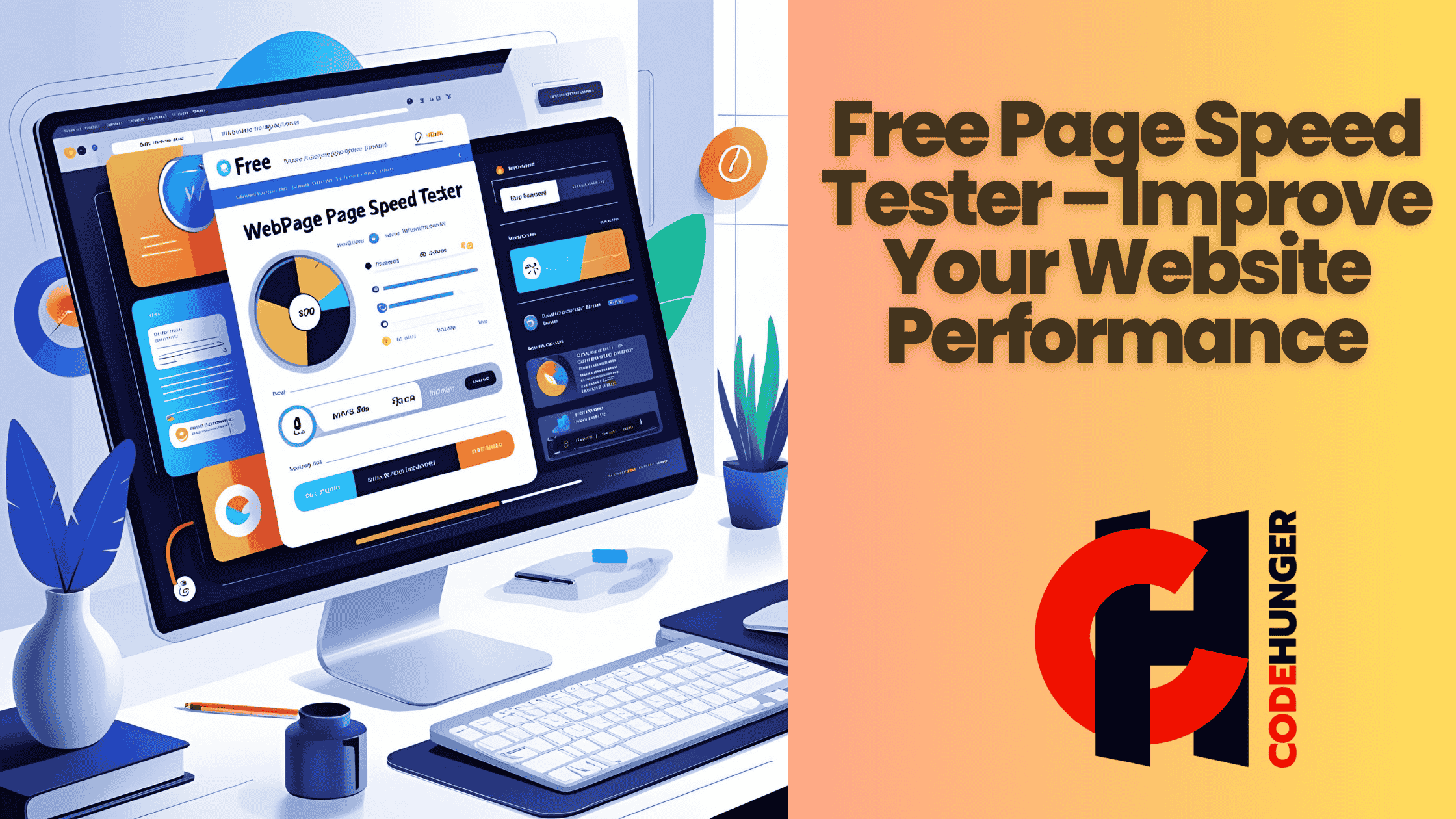Free Page Speed Tester – Improve Your Website Performance
In today’s digital-first world, speed is everything. You could have the most beautifully designed website with engaging content, but if it takes too long to load, you’re losing visitors—and potential customers—faster than you can say “bounce rate.” That’s where the Free Page Speed Tester by CodeHunger steps in.
Whether you're a website owner, developer, marketer, or small business operator, understanding and improving your website speed is no longer optional—it's essential. In this article, we’ll explore why page speed matters, how CodeHunger’s tool can help, and what you can do to boost your performance starting today.
Why Page Speed Matters More Than Ever
In an era where attention spans are shrinking and user expectations are higher than ever, your website’s speed can make or break the user experience.
User Experience and Bounce Rates
Let’s start with some numbers:
- 53% of mobile users abandon a site that takes more than 3 seconds to load.
- A 1-second delay can lead to a 7% drop in conversions.
- Even Google has confirmed: page speed is a ranking factor in search results.
Think about it—would you wait 6–8 seconds for a website to load? Probably not. Your visitors won't either.
SEO and Search Engine Rankings
Google has been prioritizing user experience for years, and page speed is a big piece of that puzzle. Faster sites not only keep users happy but also perform better in search engine rankings.
The bottom line: If your site is slow, you're losing traffic, SEO rankings, and conversions.
Introducing the CodeHunger Free Page Speed Tester
At CodeHunger, we believe tools should be accessible, effective, and hassle-free. That’s exactly what our Free Page Speed Tester delivers.
What Is It?
It’s a free online tool that analyzes your website’s loading speed and provides actionable insights to help you optimize performance. No logins. No fees. Just results.
Key Features
- Instant Speed Analysis
- Get real-time performance insights by simply entering your URL.
- Mobile & Desktop Evaluation
- See how your site performs across different devices.
- Core Web Vitals Breakdown
- Understand metrics like LCP (Largest Contentful Paint), FID (First Input Delay), and CLS (Cumulative Layout Shift).
- Recommendations & Fixes
- Actionable suggestions to help you improve your score.
- User-Friendly Interface
- You don’t have to be a developer to use it—our tool makes complex metrics easy to understand.
How to Use the Free Page Speed Tester
Using the tool is as easy as it gets. Here’s a step-by-step walkthrough.
Step-by-Step Guide
- Visit the Tool
- Go to https://www.codehunger.in/free/test-page-speed-free-online
- Enter Your Website URL
- Type or paste the website you want to analyze.
- Click ‘Test Speed’
- Let the tool analyze your site. This usually takes a few seconds.
- Review the Results
- You’ll get a detailed report with scores, metrics, and optimization suggestions.
Take Action
Follow the recommendations or share the report with your developer.
Understanding Your Page Speed Report
Metrics can be confusing, especially for beginners. Here’s a quick breakdown of what matters.
Core Metrics Explained
- PageSpeed Score
- A composite score based on how quickly and efficiently your page loads.
- Largest Contentful Paint (LCP)
- Measures when the main content becomes visible. Target: Under 2.5 seconds.
- First Input Delay (FID)
- How fast users can interact with your page. Target: Under 100ms.
- Cumulative Layout Shift (CLS)
- Prevents annoying jumps during load. Target: Less than 0.1.
Performance Tips Based on Metrics
- Slow LCP? Optimize images and server response time.
- High FID? Minimize JavaScript.
- Poor CLS? Set size attributes on images and videos.
How to Improve Your Page Speed Score
Knowing your speed score is only half the battle—let’s talk about how to improve it.
Optimization Tips for Better Performance
- Compress Images
- Use tools like TinyPNG or WebP format to reduce image sizes.
- Use a CDN (Content Delivery Network)
- Distribute your content globally for faster delivery.
- Minify CSS, JS, and HTML
- Remove unnecessary code to reduce file size.
- Enable Lazy Loading
- Load images and media only when they come into view.
- Leverage Browser Caching
- Reduce load times for repeat visitors.
- Use Fast Hosting
- Sometimes, your server is the bottleneck—consider upgrading.
Plugins & Tools That Can Help
- WordPress? Use plugins like WP Rocket or Autoptimize.
- Non-WordPress? Try Cloudflare, Google PageSpeed Module, or Lighthouse.
Real-World Impact of Speed Optimization
Let’s take a moment to look at real results. Here are a few examples of what happens when you optimize your page speed.
Case Studies
- Amazon calculated that a 100ms delay could cost them 1% in sales.
- BBC found they lost 10% of users for every extra second their site took to load.
- A small eCommerce site increased conversion rates by 20% after image and script optimization.
Business Benefits
- Higher conversions
- Lower bounce rates
- Better user satisfaction
- Improved SEO rankings
Why Choose CodeHunger’s Free Page Speed Tester?
There are other speed test tools out there, sure—but here’s why ours stands out:
- Completely Free
- No hidden paywalls or premium traps.
- No Ads, No Distractions
- Just clean results without clutter.
- Built by Developers for Everyone
- Our tool is designed to be both powerful and easy to use.
- Updated with Latest Standards
- Core Web Vitals? We’ve got you covered.
Conclusion
Speed isn’t just a technical stat—it’s a reflection of your brand, your professionalism, and your care for user experience. If your website is slow, now’s the time to fix it.
Don’t let speed bottlenecks drive away your visitors. Try the Free Page Speed Tester by CodeHunger today and take the first step toward a faster, more successful website.









